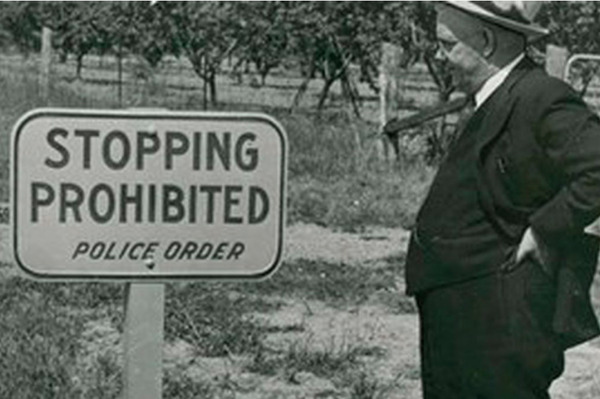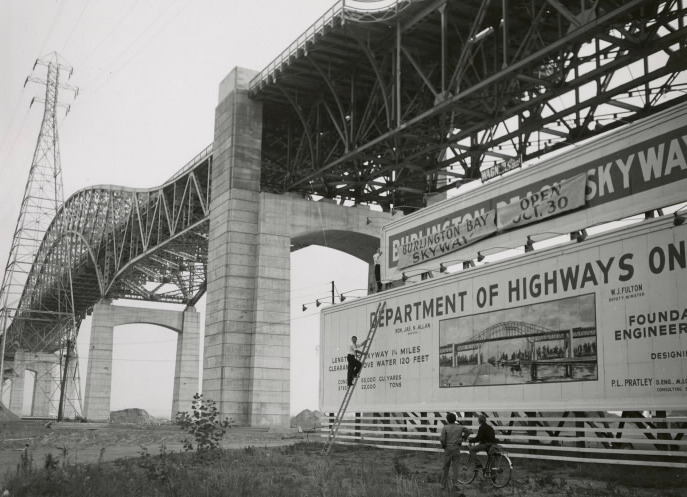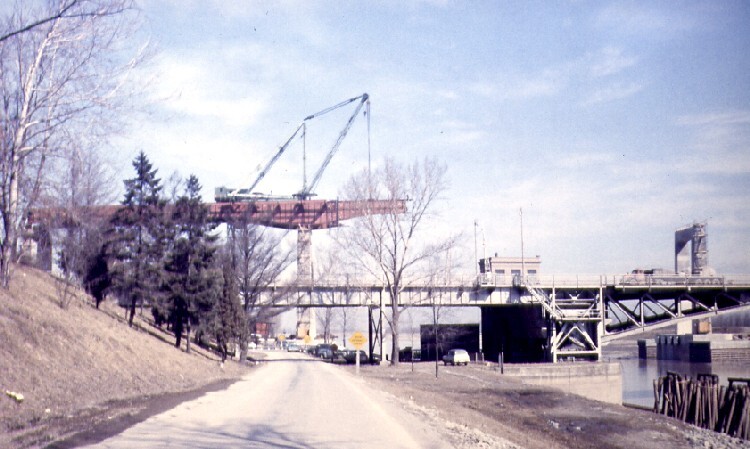Problems and Solutions
In the early days Of the highway, there were some traffic light controlled intersections along the highway. Many of these were ignored by drivers. In a 1952 survey, it was shown that half a million motorists completely ignored a stoplight which was located where the Queen Elizabeth Way passed through Oakville. It became unclear as to whether it was safer to stop, or not to stop. Understandably, this became known as "suicide junction". This was transformed into a cloverleaf in 1957. In order to make the highway safer and more efficient, changes were made, and they continue to be made to this day. Service roads were built next to the highway. The four lane bridge over Burlington Beach was built. Motorists had been forced to wait while the canal's lift bridge had allowed ships through Hamilton Harbour. In 1985, this bridge was twinned in order to provide eight lanes of traffic flow.
Traffic circles which had been troublesome were eliminated. Two traffic circles in Niagara Falls were removed in 1971 and a Stoney Creek traffic circle was removed in 1975. All of these were replaced with interchanges. This made it possible to travel from Toronto to Buffalo without being impeded.


